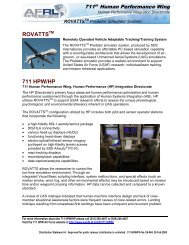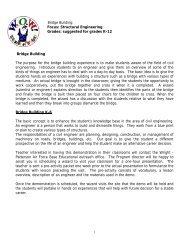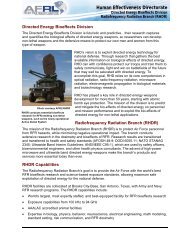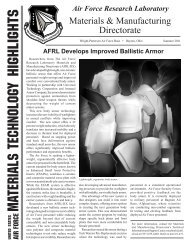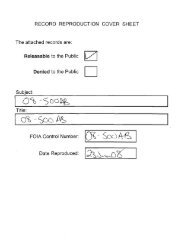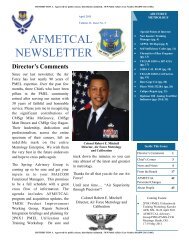USAF ILA Handbook - ACC Practice Center - Defense Acquisition ...
USAF ILA Handbook - ACC Practice Center - Defense Acquisition ...
USAF ILA Handbook - ACC Practice Center - Defense Acquisition ...
You also want an ePaper? Increase the reach of your titles
YUMPU automatically turns print PDFs into web optimized ePapers that Google loves.
and implementation before each acquisition milestone and major decision are encouraged in a<br />
number of DoD and Air Force guiding documents.<br />
2.2. In Designing and Assessing Supportability in DoD Weapon Systems: A Guide to Increased<br />
Reliability and Reduced Logistics Footprint, the Under Secretary of <strong>Defense</strong> for <strong>Acquisition</strong>,<br />
Technology and Logistics (USDAT&L)) emphasizes that acquisition PMs and their teams need<br />
to design and then assess the effectiveness of their TLCSM responsibilities. It suggests that<br />
system operational effectiveness is maximized through a disciplined program of supportability<br />
assessments aligned with traditional major milestones. Accordingly, this guidance calls for the<br />
Services to establish an <strong>ILA</strong> process.<br />
2.2.1. The DoD Template for Application of TLCSM and PBL in the Weapon System Life-<br />
Cycle supports the PM’s efforts to ensure effective sustainment is addressed. TLCSM<br />
requires a life-cycle focus for the implementation, management, and oversight of all<br />
activities associated with the acquisition, development, production, fielding, sustainment,<br />
and disposal of a DoD weapon or materiel system. The PM is designated as the Total<br />
Life-Cycle System Manager and is responsible for effective and timely product support to<br />
ensure performance, availability, and supportability of a system throughout its life cycle.<br />
2.2.2. PMs are charged with implementing life-cycle logistics in systems engineering to<br />
increase reliability and reduce the logistics footprint in the early stages of the acquisition<br />
process and subsequently providing effective life-cycle product support using PBL<br />
strategies. Figure 2-1, Life-Cycle Logistics in TLCSM, articulates this concept.<br />
2.2.3. In PBL: A Program Manager’s Product Support Guide, the emphasis is on<br />
designing for increased reliability and reduced logistics footprint and providing effective,<br />
affordable product support through PBL strategies. The Program Manager’s Guide to<br />
Buying Performance, the Assistant Deputy Under Secretary of <strong>Defense</strong> (Logistics Plans<br />
and Programs) states that PBL will apply to “new programs or major modifications, or as<br />
they reengineer product support strategies for legacy weapon systems.” PMs must apply<br />
PBL as the DoD-preferred product support strategy to improve weapon system readiness<br />
by procuring performance that leverages integrated logistic chains and public private<br />
partnerships. These guides call on PMs to apply life-cycle systems engineering processes<br />
to identify and continuously assess supportability requirements for the system.<br />
2.3. DODD 5000.1 directs PMs to focus on logistics considerations early in the design process to<br />
ensure that reliable, cost-effective, and supportable systems are fielded to achieve peacetime and<br />
wartime readiness requirements. Assessments are conducted to assist PMs in accomplishing<br />
these objectives and should encompass all programmatic aspects that address or affect<br />
supportability and readiness. The <strong>ILA</strong> process provides the PEO and the MDA independent and<br />
objective evaluations of a program’s logistics health at each acquisition milestone.<br />
Version 1: January 2006 2<br />
Air Force Independent Logistics Assessment <strong>Handbook</strong>




